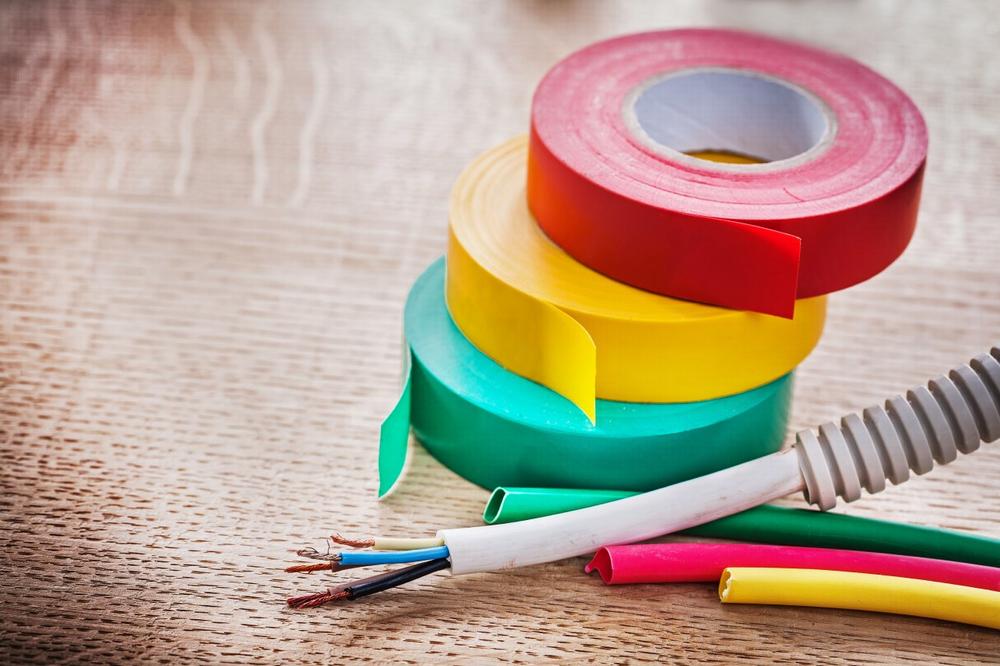When using these adhesive tapes, it is important that they achieve a good bond on the corresponding surface. They usually only have to fulfill their function for a short time. The package is sealed, sent and opened by the recipient – mission accomplished! This means that such adhesive tapes only have minimal demands and comparatively cheap tape materials and adhesives are used.
Masking tape – suitable for everyday use
Removable adhesive tapes, however, have higher demands. One common example can be seen in classic masking tape. Anyone who has painted anything at home knows how important it is to use the correct masking tape. The tape has to meet several requirements here:
- It has to bond well with the substrate on which it is attached
- It must not become soft when painted over
- The bond must be only strong enough so that it can be removed cleanly and without residue from the substrate afterwards
If these requirements are not met, the following can happen:
- The edges become detached and paint runs behind the tape, or the tape falls off completely
- The softened tape tears during removal
- If the adhesive bond is too high, the tape cannot be removed from the substrate or the substrate is damaged on removal
It is thus important that all components – upper material, adhesive, substrate – are in perfect harmony.
These are just two examples of where adhesive tapes are used in everyday life. However, tapes are also used on an even greater scale and under much stricter demands, including in products that we may not even think about.
Adhesive tapes in vehicles
Several meters of adhesive tape can be found in our vehicles, for example. Entire cable harnesses are wrapped in adhesive tape so they are easier to install. Many foamed adhesive tapes are also used. In this case, the tape is used for shock absorption and compensates for surface irregularities. These adhesive tapes feature high-quality solvent adhesives that have to maintain their function for many years and in the most varied conditions, from tropical heat in summer to Siberian winters.
Adhesive tapes and passenger transport
Applications in the field of passenger transport have very strict requirements in terms of flammability. Whether double-sided tape for fixing carpets or hook-and-loop tape for fastening headrest covers on aircraft or trains, the tapes must have flame-retardant qualities. In this case, the tape material and adhesive must contain additional flame-retardant components that ideally lead to a flame extinguishing on its own. This means an extremely important additional function also has to be met in addition to the traditional adhesive quality of bonding two materials together. This requires extremely comprehensive formulation expertise at the adhesive manufacturer. Finding the correct formulation brings with it high development efforts.
Adhesive tapes and electronics
Adhesive tapes are also found in our trusty companions – namely smartphones. For example, they are used for fixing the display securely in place. Also used are conductive adhesive tapes that are designed for earthing the devices. This means there are many other electronic appliances where adhesive tapes are required, including tablets, televisions and so on.
Adhesive tapes on the construction site
Adhesive tapes are also regularly used at construction sites. “Airtight construction” has become a common term in recent years. Put simply, this means that air is prevented from passing through the building when the doors and windows are closed. This leads to improved thermal insulation and prevents thermal bridges, which can cause the build-up of moisture and ultimately mold growth. Airtight construction is standard in today’s passive houses. One way in which this is achieved is by using adhesive tapes. Roof underlayments, which are used as a membrane for moisture exchange, have to be connected to one another so that they are airtight. This is ensured by using suitable adhesive tapes that permanently connect the underlayments together. These tapes are partially pre-integrated in the material lines, which makes laying and connecting much easier for the builder. As work takes place in all weather conditions, the underlayments also have to achieve a good bond in rain and cold. Moreover, the tapes also have to ensure that the lines remain airtight for several decades. Fortunately, there are high-quality adhesives available that meet these requirements! Additionally, vapor barriers are also installed under the roof of the house. These are special plastic films that also have to be stuck together reliably for years using adhesive tapes.
Different applications mean different requirements
All of these applications place different demands on the tape material and, above all, on the adhesive. For simple applications such as packing tape, rubber hot melts can be used. Meanwhile, acrylate adhesives are the correct choice for applications where extreme durability and high temperature and chemical resistance are of primary importance.
Summary
To summarize:
- Adhesive tapes are used in many areas of our everyday life, whether by us ourselves or in the things we use
- Adhesive tapes have to meet a wide range of different requirements – strong adhesion, easy to remove, able to cope with weather conditions or flame-retardant
- Rubber hot melts can be used for short-term and simple applications, while acrylate adhesives are preferred for high-end applications
If you require more information on finding the right adhesive for your application, our adhesive experts would be happy to help.
By the way, did you know that adhesive tape is also a great advertising medium? Your company logo or another slogan can be printed on the tape. Thanks to modern digital printing technology, small series of just a few rolls can be produced at relatively low cost.
http://blog.artimelt.com/english/adhesive-tapes-use-and-function
artimelt AG
Wassermatte 1
CH6210 Sursee
Telefon: +41 (41) 92605-00
Telefax: +41 (41) 92605-29
http://artimelt.com
Business Operations
Telefon: +41 (41) 92605-32
E-Mail: patrizia.fussen@artimelt.com
